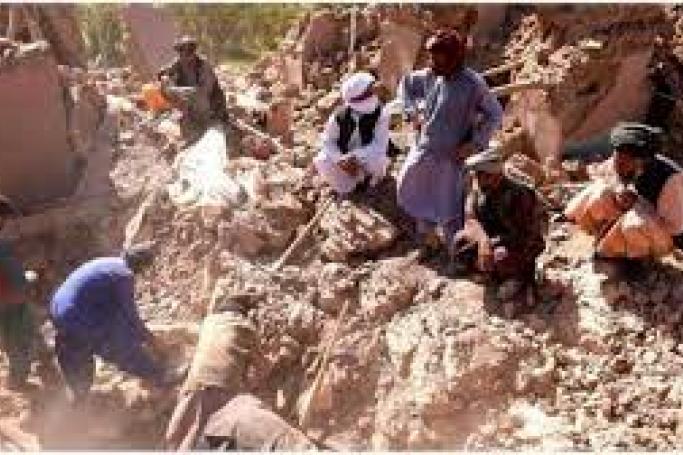A magnitude 6.3 earthquake shook western Afghanistan on Sunday, killing one and injuring dozens more in the same region where more than 1,000 people died in tremors last week.
Residents in the city of Herat had just begun returning to their homes again when the quake hit, after days of sleeping outside fearing aftershocks from last week's tremors.
"Herat's people are panicked and scared," said 27-year-old shopkeeper Hamid Nizami. "It's Allah's blessing that it happened during the day, people were awake."
Sunday's quake hit just after 8:00 am (0330 GMT) with an epicentre 33 kilometres (20 miles) northwest of Herat city, capital of the same-named western province, and was followed by aftershocks of magnitudes 5.4 and 4.2, the US Geological Survey said.
Abdul Qadeem Mohammadi, head doctor at Herat Regional Hospital, told AFP that "so far 93 injured and one dead have been registered".
National disaster management officials said they were still investigating the scale of destruction.
Another magnitude 6.3 quake and eight powerful aftershocks jolted the same part of Herat on October 7, toppling swathes of rural homes.
The Taliban government said more than 1,000 people were killed in last week's tremors, while the World Health Organization (WHO) put the figure at nearly 1,400 late Saturday.
Another tremor of the same intensity killed one person and injured 130 others days after the initial quakes, as thousands of terrified residents were left without shelter and volunteers dug for survivors.
The quakes were followed by dust storms which damaged the tents survivors were living in.
"Many of our countrymen don't have any place to live and nights are getting colder," said shopkeeper Nizami.
On Sunday, officials said more than 528 prisoners had been released from Herat province and neighbouring Badghis province because jails "were in danger of collapsing" from quake damage.
The Prisons Administration Authority said the freed included those who had served large portions of their sentences and showed signs of reform.
- 'Can't live here' -
The WHO says nearly 20,000 people have been affected by the string of disasters, with women and children making up most of the fatalities.
Thousands of residents are now living around the ruins of homes where entire families were wiped out in an instant.
Forty-year-old Mohammad Naeem told AFP he lost 12 relatives, including his mother, after last week's quakes.
"We can't live here anymore. You can see, our family got martyred here. How could we live here?"
Earthquakes are frequent in western and central Afghanistan and are mostly caused by the Arabian and Eurasian tectonic plates jutting against each other.
Providing shelter on a large scale will be a challenge for Afghanistan's Taliban authorities, who seized power in August 2021 and have fractious relations with international aid organisations.
"We know they could live there in tents for one month, but more than that would probably be very difficult," said public health minister Qalandar Ebad.
Most homes in rural Afghanistan are made of mud and built around wooden support poles, with little in the way of steel or concrete reinforcement.
Multi-generational extended families generally live under the same roof, meaning serious earthquakes can devastate communities.
Afghanistan is already suffering a dire humanitarian crisis, with the widespread withdrawal of foreign aid following the Taliban government's return to power.
AFP












